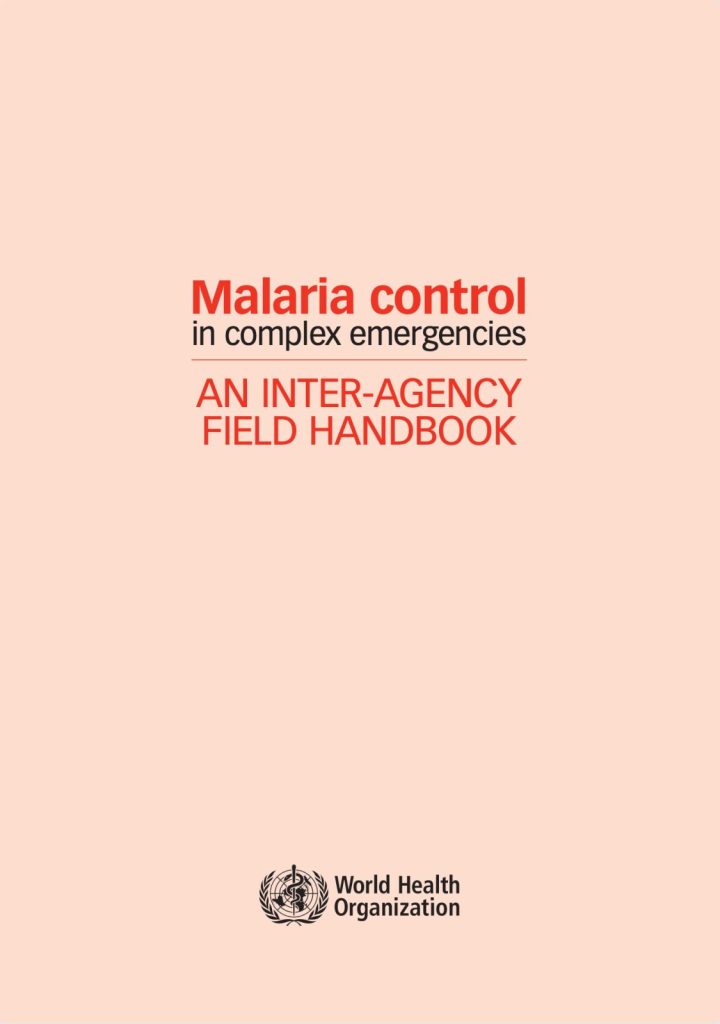Complex emergencies are characterized by insecurity and mass population movements. At the end of the year 2000, an estimated 135 million people – including refugees, returnees and internally displaced persons – were af- fected by complex emergencies.1 More than 40 million people in Africa – more than 75% of them women and children – were displaced from their homes, either within their own countries or to neighbouring countries. The areas of the world whose populations are most affected by complex emer- gencies are often those with the greatest malaria burden. Consequently, malaria is a significant cause of death and illness in complex emergency situations.
Effective malaria control programmes prevent malaria transmission by promoting personal protection measures and effective vector control strategies, and providing appropriate case management with early diagnosis and effective treatment. However, malaria control in complex emergency situa- tions is often difficult because of the breakdown of existing health services and programmes, displacement of health care workers and field staff with malaria expertise, movement of non-immune people to endemic areas, and concentrations of people, often already in poor health, in high-risk, high- exposure settings.
This interagency handbook was developed by the Roll Back Malaria (RBM) Technical Support Network on Complex Emergencies. It focuses on effective malaria control responses to complex emergencies, particularly during the acute phase when reliance on international humanitarian as- sistance is greatest. It provides policy-makers, planners, field programme managers and medical coordinators with practical guidance on designing and implementing measures to reduce malaria morbidity and mortality. Such measures must address the needs of both the displaced and the host populations and must accommodate the changes in those needs as an acute emergency evolves into a more stable situation.

